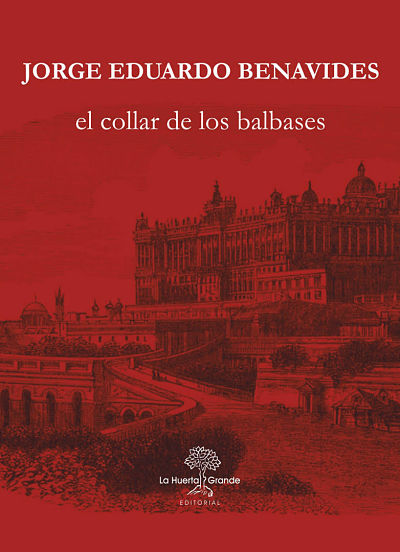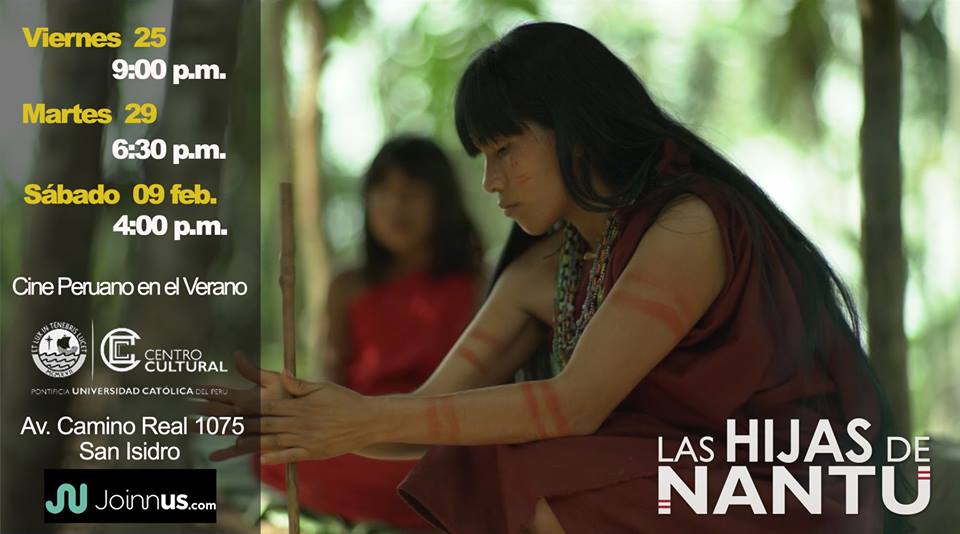
«El collar de los Balbases» de Jorge Eduardo Benavides (Comentario)
22 enero, 2019
Ríchar Primo Silva
9 febrero, 2019He tenido la oportunidad de ver este documental, dirigido por Willy Guevara y producido por Maricella Vilca. Ha sido, no solo una grata experiencia, sino también una aleccionadora visión de lo complejo que es nuestro país: una nación conformada por una rica y, a veces, desconocida variedad de culturas. Variedad que debería enriquecernos mucho, y en varios frentes, pero que, más bien, no solo nos aleja, sino que ensombrece el sueño de la gran integración.
Como una nota antes de invitarlos a asistir a las próximas proyecciones de Las hijas de Nantu, les señalaré que – solo en el terreno lingüístico, que ya es una muestra de la singularidad cultural – en el Perú coexisten más de cuarenta y cinco lenguas. Sin hablar del castellano, cuatro de ellas son de matriz andina y las demás, diseminadas en la amazonia peruana en trece grupos o familias lingüísticas. Cada una de ellas, expresa su valoración del mundo de un modo particular y es el resultado de un largo proceso social e histórico. Comprender una lengua no es solo hablar de sus componentes lingüísticos, es adentrarse en la cosmovisión de cada cultura. De allí que se hable de lo complejo que es llegar a la integración cultural en nuestro país. Sin embargo, que sea difícil, no implica que no se asuma tal reto. Y hay hacerlo desde todos los frentes posibles: por ejemplo, desde el arte y, entre ellos, desde el cine. Ese es uno de los méritos de este valioso documental que nos introduce en los pormenores de la cultura awajun, más conocida como aguaruna.
Willy Guevara, quien le ha dedicado muchos años a la investigación de esta cultura, ha compuesto un documental muy bien ilustrado, y le ha agregado una visión personal de ella. De allí que, al terminar la función, uno sienta una peculiar identificación con su planteamiento.
En el documental se cuenta que en la cultura awajun existió un matriarcado. Según sus leyendas, la diosa Nantu, la luna, le regaló a las mujeres la agricultura. El hombre y la mujer vivían en armonía hasta que la amenaza de expansión de los moche, cultura preinca de la costa norte peruana, hizo que el hombre awajún se convierta en guerrero. A partir de entonces el hombre elimina el matriarcado y empieza, entre otras prácticas relacionadas al poder, a ejercer la poligamia; desde entonces, la mujer ha intentado cambiar al hombre a través de diferentes mecanismos entre ellos el envenenamiento. El documental busca entender el fenómeno del envenenamiento desde el interior de la propia comunidad, descubriendo un mundo mítico y de costumbres ancestrales valiosas como el Canto Anen. Dichas prácticas no se han perdido, sino que se han transformado en mecanismos de protesta de la mujer. Todo ello les ocasiona no solo la muerte, sino muchos otros sufrimientos. ¿Qué hacer frente a ellos? ¿Cómo ayudar a mejorar la vida sin maltratar su cosmovisión? ¿Hay que hacerlo? Son algunas de las preguntas que se deslizan del documental.
Desde mi precario conocimiento del cine, creo haber visto un valioso trabajo, no solo por el contenido, sino por su realización. Con una impresionante fotografía y una cuidada edición.
Atención, Las hijas de Nantu ganó el Concurso Nacional de Proyectos de Largometraje Documental del Ministerio de Cultura y se alista para presentarse en varios festivales. Seguro que les irá muy bien.
Por mientras, hago del conocimiento general que, por estos días, se proyectará en el auditorio del Centro Cultural de la Católica: el martes 29 de enero y el sábado 9 de febrero. Me aúno a la invitación general.
Valdrá la pena darse un tiempo para asistir.
TRANSLATION IN ENGLISH

LAS HIJAS DE NANTU
(COMMENTARY)
I had the opportunity to see this documentary, directed by Willy Guevara and produced by Maricella Vilca. It has been, not only a pleasant experience, but also an instructive vision of how complex our country is: a nation made up of a rich and, at times, unknown variety of cultures. Variety that should enrich us a lot, and on several fronts, but this doesn’t happen, instead overshadows the dream of a better integration.
As a note before inviting you to attend the next projections of The Daughters of Nantu, I will point out that – just in the linguistic field is already a sample of cultural uniqueness – in Peru there are more than forty-five languages coexisting, beside the Castilian. Four of this languages are indigenous andean roots, and the other ones, disseminated in the Peruvian Amazon in thirteen groups or linguistic families. Each of them expresses their appreciation of the world in a particular way and is the result of a long social and historical process. Understanding a language is not only talking about linguistic components, it´s entering into the worldview of each culture. Hence, talk about how complex it is to reach cultural integration in our country. However, as difficult that it is, this doesn´t imply that this challenge shouldn’t be assumed. And need to be done of all possible fronts: for example, from art and, among them, from the cinema. That is one of the merits of this valuable documentary that introduces us to the details of the Awajun culture, better known as Aguaruna.
Willy Guevara, who has spent many years researching this culture, has composed a very well-illustrated documentary, and added a personal vision. Hence, at the end of the function, one feels a peculiar identification with his approach.
The documentary said that in the Awajun culture there was a matriarchy. According to their legends, the goddess Nantu, the moon, gave women the opportunity to farm. The man and the woman lived in harmony until the threat of expansion of the Moche, pre-Inca culture of the Peruvian north coast, made the Awajún man become a warrior. From then on, man eliminates matriarchy and begins, among other practices related to power, to exercise polygamy; Since then, women have tried to change men through different mechanisms, including poisoning. The documentary seeks to understand the phenomenon of poisoning from within the community itself, discovering a mythical world and valuable ancestral customs such as the Anen sing. These practices have not been lost, but have been transformed into women’s protest mechanisms. All this causes not only death, but many other sufferings. What to do in front of them? How to help improve life without mistreating your worldview? Should we do it? These are some of the questions that slide from the documentary.
From my precarious knowledge of cinema, I think I have seen a valuable work, not only for the content, but for its realization. With an impressive photograph and a careful edition.
Attention, The daughters of Nantu won the National Documentary Feature Film Competition of the Ministry of Culture and it´s ready to perform at several festivals. Surely they will succeed.
It will be worth it to take time to watch it.
